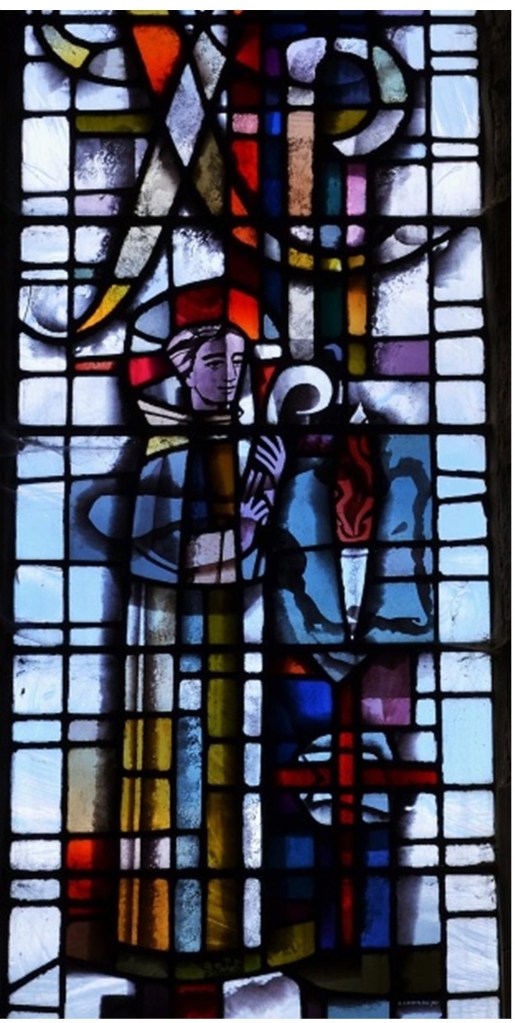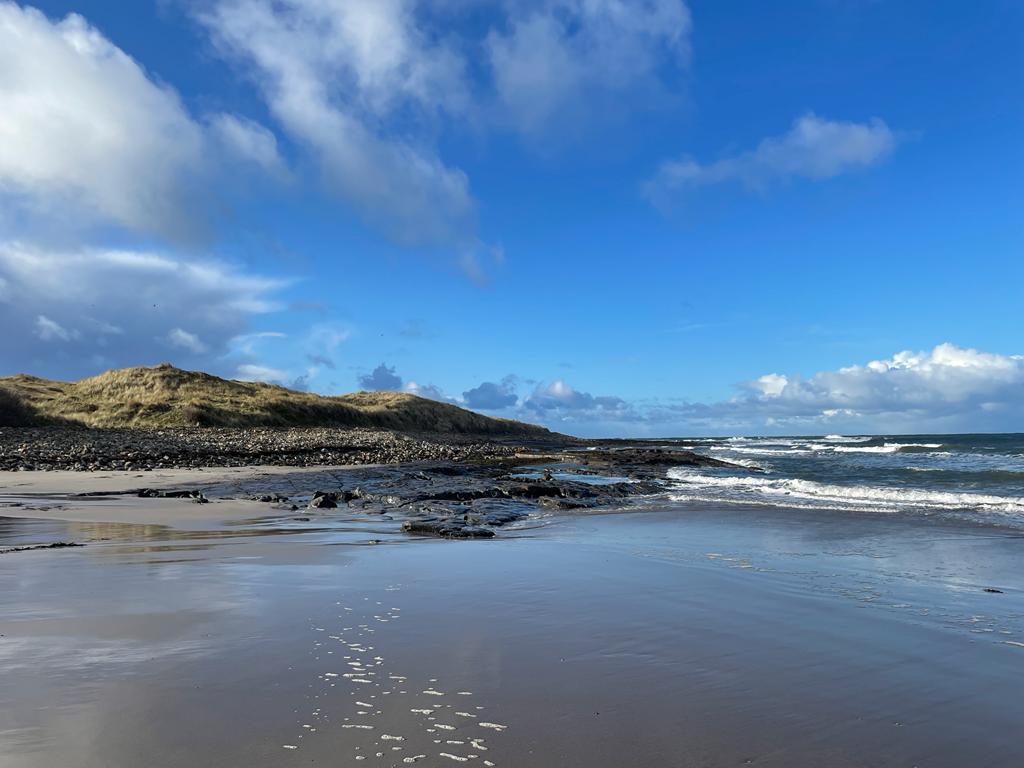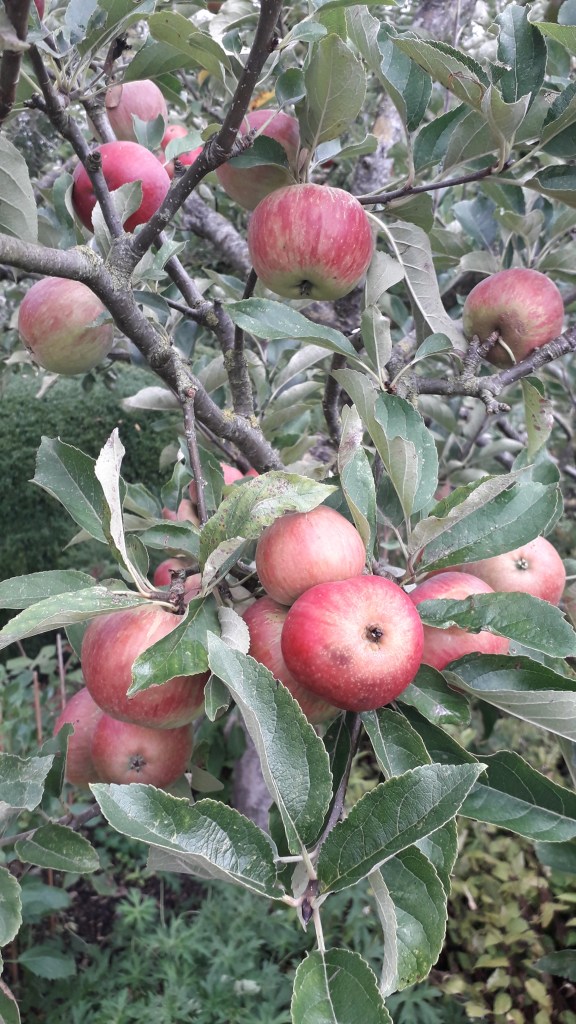
In many journeys of faith there are special places that have spoken to us vividly about God.
The Celtic Christians called these the ‘thin places’ where the membrane which separates our world
from the world of heaven is so thin that it is easy for heaven’s spirit to burst through,
catching us up in a breathtaking experience of God’s nearness.
For me one very special ‘thin’ place will always be the Holy Island of Lindisfarne,
off the Northumbrian coast between Bamburgh and Berwick-upon-Tweed.
It was to this island that St. Aidan came in 635AD.
He nearly didn’t come at all!
When King Oswald won back his Kingdom from the pagan king of Mercia,
he immediately sent to Iona for a monk to teach his people Christianity.
Oswald had spent many years in exile on Iona and there embraced the Christian faith.
His desire was that his people would also find a love for Christ.
The Abbot of Iona sent a monk who soon fell foul of the local people whom he branded as barbarians
and un-teachable. Returning to Iona he told his brethren what he thought and a gentle monk admonished him.
“I think, brother, that you gave them the meat of the gospel when what they needed first was milk.”
Wise words but as so often happens, those who criticise (however gently) must be prepared to serve!
Aidan was sent to Northumbria! There he set up his base in the place which, twice a day became an island—Lindisfarne.
Here he built a monastery and founded a school in which he taught 12 boys amongst whom
was the future St Chad, and his brother, St. Cedd as well as their two other brothers.
From this island a great mission began which was to take the Christian Gospel throughout the North and the Midlands and to Essex.
Because, initially, Aidan couldn’t speak the language, King Oswald went with him on his missionary journeys
to act as interpreter. One of the earliest examples of the co-operation between Church and State.
Lindisfarne remained a Christian centre until Viking raids led to the withdrawal of the monks.
Today it is once again a centre both of pilgrimage and prayer.
The local Church set up a Christian house for pilgrims known as Marygate House and it was here, in 1974 that I first came across Aidan and the spirit of the Celtic saints.
I have returned many times since and more than once I have experienced the sense of God’s nearness and presence. It truly is a ‘thin’ place.
Some, reading this will know exactly what I mean and will have their own ‘thin’ or special places (associated often with special holy Christians).
They are places where faith comes alive in a unique and special way. Such experiences carry us through the more mundane parts of our Christian journey.
What marks such places is that they are, in the words of the poet T.S.Eliot, places ‘where prayer has been valid’ – where prayer has consecrated them to God.
It strikes me that we should not have to travel far to find such places.
It is often the sincere prayer of ordinary Christians which makes a place holy.
One of my personal criteria when I visit, or worship in, a church is whether I can find God easily there.
A place where God can be found is a holy place, a thin place. It certainly needn’t be a church nor a place of special pilgrimage.
One of the holy and thin places I discovered is a slight bend in the rough hewn road which leads down from the Parish Church on Holy Island
to the shore which is opposite the crossing to Cuddy’s isles.
One day, when the island was clothed in a mist, I walked down this road and quite suddenly and totally unexpected, I found I had a companion.
I knew that it was St. Aidan whose simple presence touched me.
I knew at that moment I was on holy ground. I was at the thin place which is extraordinarily the meeting point between earth and heaven.
I can’t (and don’t want to) explain it in any other way.
Yet, whilst people like St. Aidan seem to be extra-holy, he would probably argue that he did nothing that all Christians can do,
which is to allow God to love them until they are on fire with God’s love.
That can be true for all of us and where it is then we become the ‘thin’ place where others can find God.

Photo: Gill Henwood
Aidan
You came on the flow tide
blown in, full of hope and zeal.
You carried the milk of the Gospel
but in your satchel, the firm, solid Good News waited to be heard.
The waves revealed the pilgrim way to Lindisfarne,
for its first journeying companion of Christ.
Those waves, a sign of what your Lord achieved through you:
first, lapping the hearts of those aspiring to know God,
then rushing in, hurrying to swamp the land with love:
a sea boiling with joy and hope and message.
Milk, then meat.
Quiet ripples, then mighty waters of God’s love and grace.
You were sent, Apostle to the North.
You came: a gentle breeze inspiring others,
awakening in them the wind of the Spirit.
Because of you, they stormed the Gospel message,
opening others to grace and truth,
to joy and love.
Mr G. | St Aidan’s Day, 2020


